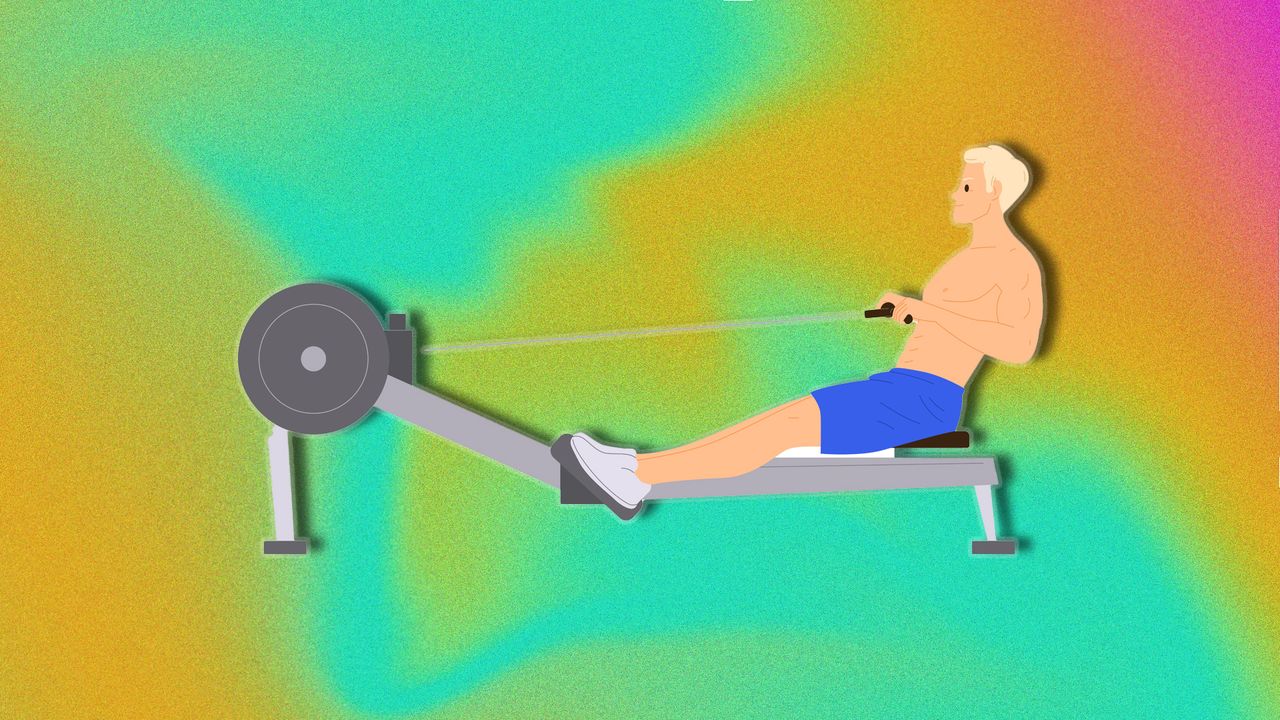Good news: you don’t need to compete for Cambridge in the boat race – or ever step in an actual boat – to achieve rowing machine benefits from a decent workout on the rower. Not as sexy as running, or as innovative as the SkiErg, the humble rower can often be overlooked, gathering dust in the corner of the gym. But, with its inclusion in fitness races like HYROX, it’s making a bit of a comeback.
Makes sense then, to drop a story on everything you need to know about exactly how the rower can supercharge your cardio fitness – because used properly, it will give your whole body a run for its money in the process.
Is an improved VO₂ max on of the the best rowing machine benefits?
Like most intense cardio workouts, the rower is an absolute beast when it comes to boosting your VO₂ max – i.e. the efficiency with which your heart is able to pump oxygen to your muscles during exercise.
Rowing makes multiple big muscles (legs, hips, core, back, and arms) work all at once, so your heart and lungs need to pump a lot of oxygen-rich blood every stroke,” explains fitness warrior and Tactical Athlete Farren Morgan.
In one eight-week study, beginners rowed three times a week (two steady 30-minute rows and one high-intensity interval session) with their VO₂ max rising about 10 percent.
“Because the rower can load the entire body very quickly, it pushes fitness to the limit,” says Morgan. In another study, elite athletes reached the same peak VO₂ on both a rowing machine and a bike, proving the rower can take the heart-and-lung system right to its ceiling.
“The rower allows you to work at very high intensities, one of the main reasons being that you aren’t restricted by your physical body weight like with running,” says Cameron Harris, managing director at Truth Fitness.
Harris gives the example of a person 10kgs overweight going for a run. It’s likely that the pounding through the knees will cause the runner to tap out before their lungs go. Not so with the rower.
“In this example, the runner’s heart, lungs and Vo2 max haven’t been positively impacted as they haven’t been taken to their maximum capacity, but rowing allows us to get our heart rate up to 92 percent plus of max, and hold it there for much longer. This is when VO₂ max increases.”
What muscles is rowing best for building?
Rowing is an all-rounder, with an electromyography study – recording the activity of individual muscles – finding that it hits 80–85 percent of the body’s main muscles – much more than treadmill running, or using the cross trainer.
As Morgan explains, your quadriceps and glutes push while hamstrings steady the knees while the erector spinae and abs keep the back tight. Your lats, rhomboids, rear deltoids, and biceps all come into action when pulling on the handle, and the trapezius, rotator-cuff, and fore-arm muscles keep the shoulders and grip stable. Meanwhile, the hip-flexors and the front-shin muscle (tibialis anterior) pull the seat forward and set up the next drive.
“Researchers note that weak glutes or hamstrings can shift strain to the lower back,” Morgan adds. “This is why many rowing programmes add extra strength work to prevent overload and injury.”
The best ways to protect hips and knees
“When done with proper technique, rowing is very joint-friendly,” says Aaron McCulloch, director at YOUR Personal Training. In fact, a 12-week study of adults who had mild knee osteoarthritis found that guided rowing cut knee pain, strengthened the thigh muscles, and helped users stand from a chair faster. Every stroke finishes with full hip extension, so the glute muscles and small deep rotators get stronger. Those muscles support the front of the hip joint during everyday walking and stair climbing. The trouble is, few of us have good technique. “Poor technique (like hunching, flaring knees or collapsing at the catch) can cause discomfort or lead to injury over time,” says McCulloch.
